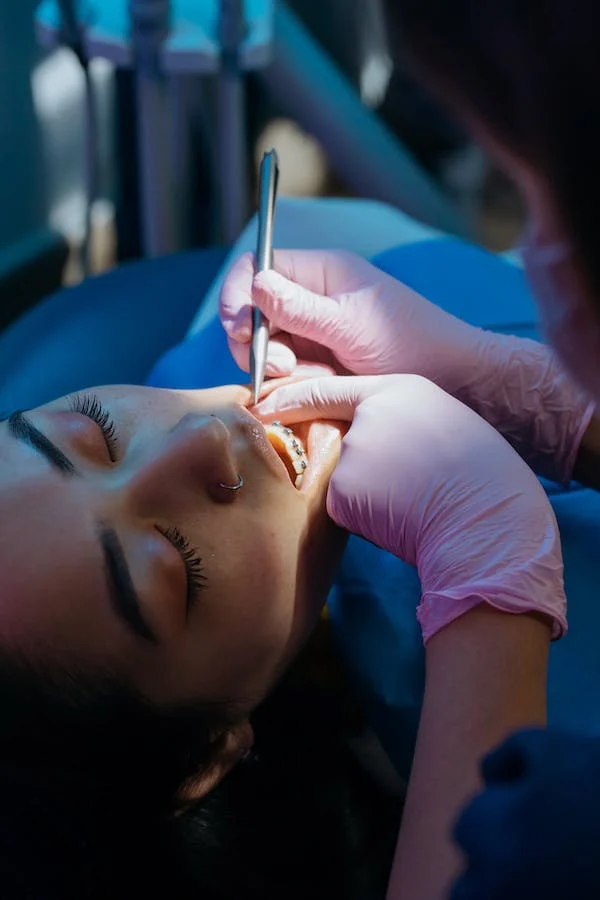3 Simple Techniques For Legacy Orthodontics
3 Simple Techniques For Legacy Orthodontics
Blog Article
Little Known Facts About Legacy Orthodontics.
Table of ContentsGetting The Legacy Orthodontics To WorkRumored Buzz on Legacy OrthodonticsLegacy Orthodontics for DummiesThe 30-Second Trick For Legacy OrthodonticsOur Legacy Orthodontics PDFs
In addition, we supply flexible treatment timetables, versatile payment alternatives and a fun, pleasurable experience.An orthodontist is a dental expert trained to identify, stop, and treat teeth and jaw abnormalities. Orthodontists function with people of all ages, from kids to grownups.
Malocclusion, or misaligned teeth, can bring about dental problems, consisting of dental cavity, periodontal condition, and challenging or excruciating eating. Not everybody is birthed with straight teeth. If you have a negative bite or huge areas in between your teeth, you may desire to seek advice from a dental professional specializing in orthodontic treatment.
Unknown Facts About Legacy Orthodontics
( Photo Credit Scores: DigitalVision/Getty Images) Orthodontists make use of taken care of and detachable oral gadgets, like braces, retainers, and bands, to alter the position of teeth in your mouth. Orthodontic treatment is for oral problems, consisting of: Jagged teethBite troubles, like an overbite or an underbiteCrowded teeth or teeth that are also far apartJaw misalignmentThe objective of orthodontic therapy is to boost your bite.
A healthy and balanced bite guarantees you can consume, eat, and talk correctly. While you might consider orthodontists as primarily for kids or young adults that require dental braces, they can remedy dental troubles at any age. Orthodontists attend university, oral institution, and orthodontic school. After graduation, they spend 2 or 3 years in an orthodontic residency program.
, but not all dental experts are orthodontists. They focus on 2 areas: How to properly and securely move teeth How to properly lead growth in the teeth, jaw, and faceOnce an orthodontist has actually finished training, they have the option to come to be board licensed.
The 7-Second Trick For Legacy Orthodontics
Misalignment, or malocclusion, is one of the most common reason people see an orthodontist. It is genetic and is the outcome of size differences in between the top and lower jaw or between the jaw and teeth. Malocclusion results in tooth congestion, an irregular jaw, or uneven bite patterns. Malocclusion is usually treated with: Your orthodontist connects steel, ceramic, or plastic square bonds to your teeth.
If you have only small malocclusion, you might be able to make use of clear braces, called aligners, rather of traditional braces (https://www.pageorama.com/?p=legacyortho). Some people require a headwear to help move teeth right into line with stress from outside the mouth. After dental braces or aligners, you'll need to use a retainer. A retainer is a custom gadget that maintains your teeth in position.
They're most often utilized on kids. They can develop added area in the mouth without having to pull teeth. If you have a serious underbite or overbite, you might require orthognathic surgery (likewise called orthodontic surgical procedure) to extend or reduce your jaw. Orthodontists make use of wires, medical screws, or plates to support your jaw bone.
You might need to see an orthodontist if you have: Crowding or otherwise sufficient space for every one of your teethOverbite, when your top teeth come over your bottom teethUnderbite, when your bottom teeth are too far forwardSpacing or concerns with gapsCrossbite, which is when your top teeth fit behind your base teeth when your mouth is closedOpen bite or a vertical space between your front base and top teethMisplaced midline, when the facility of your bottom and top teeth don't line up Correcting an oral malocclusion can: Make biting, eating, and talking easierImprove the balance of our face and your general appearanceEase pain from temporomandibular joint disordersSeparate your teeth and make them simpler to clean up, helping prevent dental cavity or tooth cavities It's commonly a dental expert that initially notifications misaligned teeth during a regular test.
The Ultimate Guide To Legacy Orthodontics

During your initial orthodontic consultation, you'll likely have: A dental examPhotos taken of your face and smileDental X-raysPanoramic (360 level) X-rays of your face and headImpressions to produce molds of your teethThese examinations will certainly assist your orthodontist understand how to wage your treatment. orthodontics. An orthodontist is a dentist that's had training to treat your teeth and jaw
Orthodontists might do surgical treatment, exams,X-rays,and even more to aid you obtain a more comfy, much healthier smile. An orthodontist is concentrated on your bite, so something like a broken tooth would certainly be managed by a dentist. Orthodontists are dental experts but not all dental professionals are orthodontists. Orthodontists are focused on your bite, or the way your teeth meshed, and the straightness of your teeth.
Ever wondered exactly how celebs always appear to have perfectly straightened teeth? The solution often depends on the experienced hands of an orthodontist. However exactly what does an orthodontist do? Orthodontists are oral experts who focus on fixing irregularities in the teeth and jaws. Their know-how surpasses wikipedia reference simply producing a gorgeous smile; it includes boosting your total oral health and feature.
Not known Facts About Legacy Orthodontics

, orthodontists have a varied toolkit at their disposal. These reliable braces utilize a system of brackets bonded to the teeth and connected by cords.
Clear aligners, like Invisalign, are a popular alternative for clients looking for a much more very discreet therapy option. These removable trays are custom-made to considerably shift the teeth's position. Headwear may be utilized along with braces or aligners to apply added targeted forces, specifically for remedying jaw disparities. In situations of slim jaws, palatal expanders can be utilized to produce area for appropriate tooth positioning.
Report this page